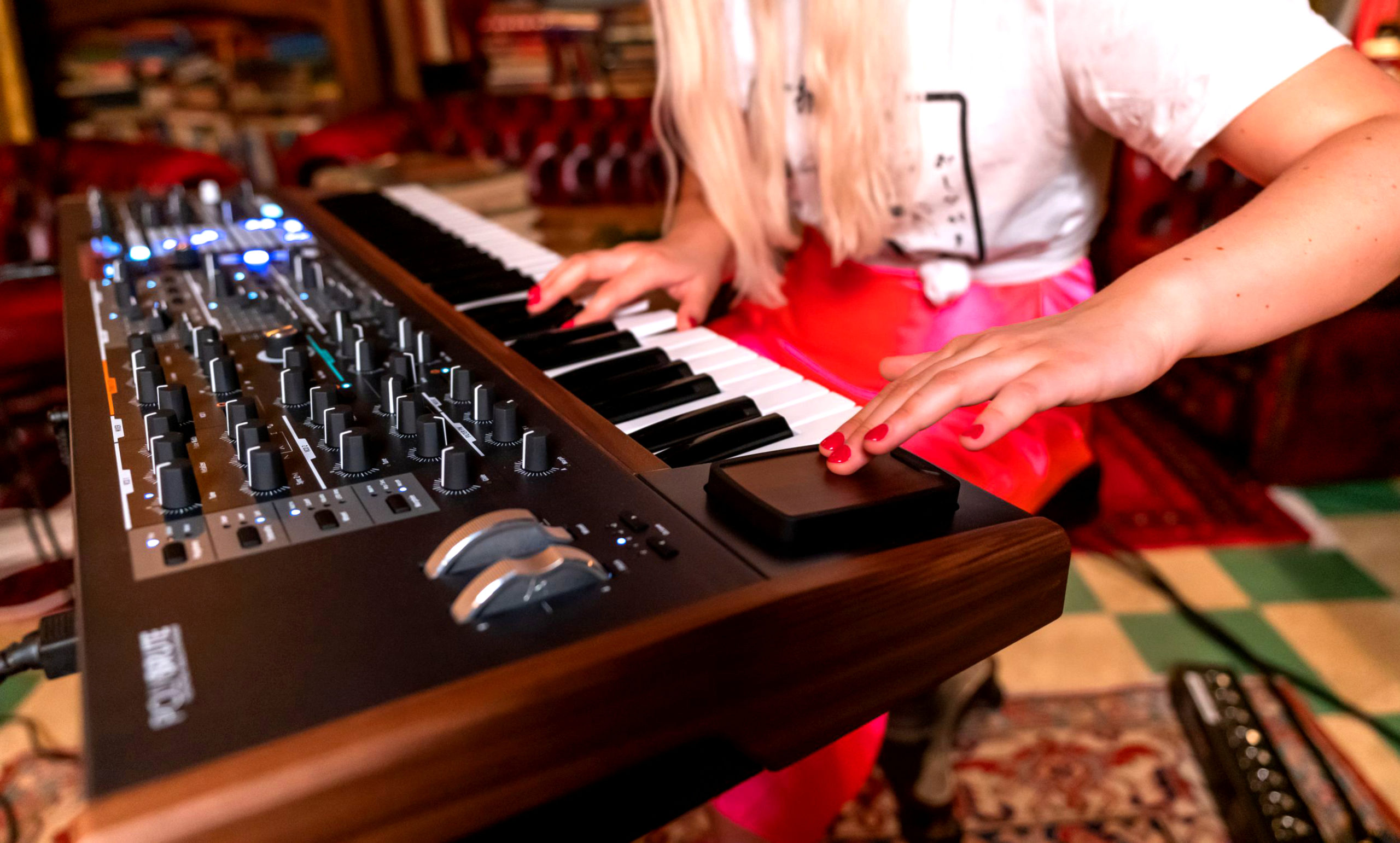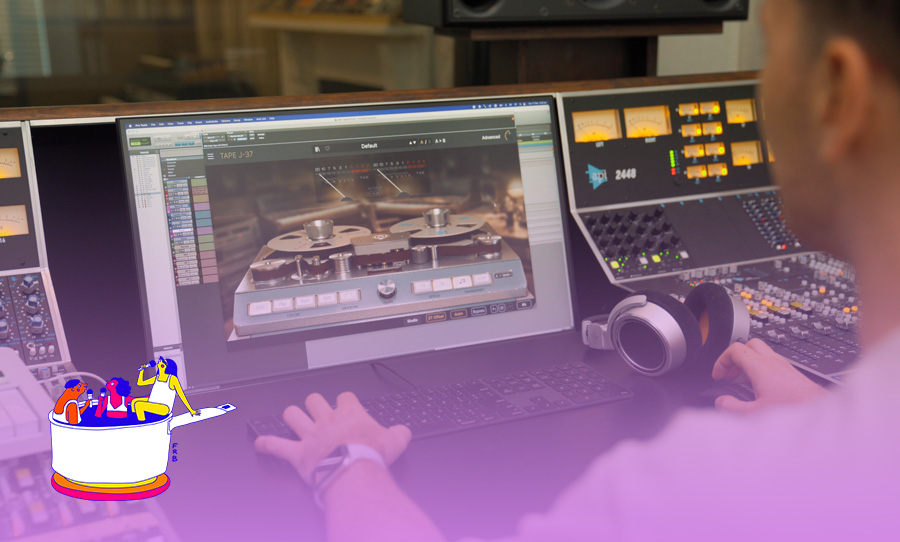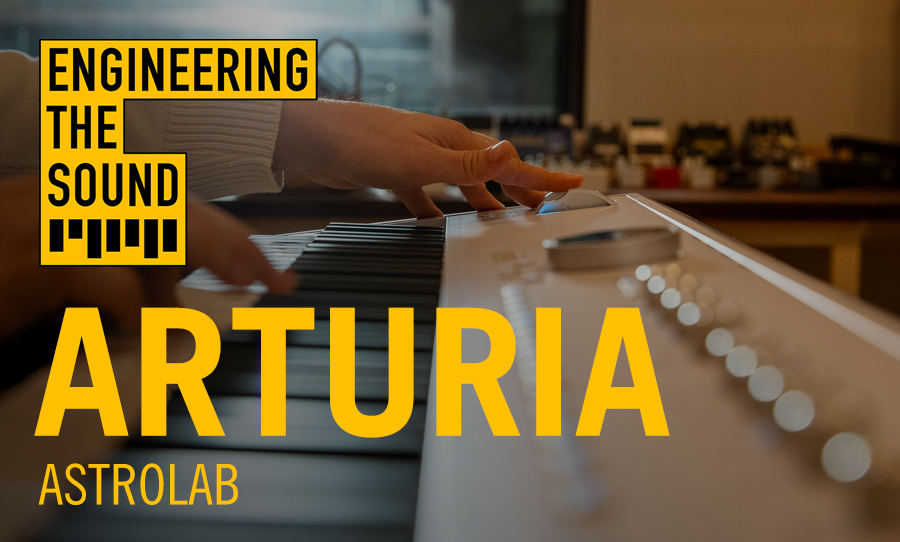If you’re anyone who’s anyone in the music-making world, you know about Arturia. Their vision is simple: create accessible music technology.
When looking at Arturia’s website you are greeted by their tag line: “Your Experience, Your Sound“, which perfectly captures the company’s creative core value: they are making technology for you.
Arturia has spent decades producing software, hardware, plugins and interfaces for professional and amateur musicians. They are a hub for innovation and their software suites, led by the V Collection are testament to that. Arturia strives to design products that are user friendly and meaningful to their community.
So let’s take a look at the story behind the brand that has a place in every part of your studio.

Early breakthroughs
The story starts in 1999, Grenoble, France where two uni students named Frédéric Brun and Gilles Pommereuil meet through the University Orchestra. Both students were engineers and were fascinated by the technology behind music production. From fiddling with existing products and modules, they developed the framework for their first flagship software ‘Storm’. The device was an all-in-one virtual studio, that made music creation accessible and easy to navigate.
Brun and Pommereuil had a common goal: to democratise music production. With an intention to create software that was user-friendly, easy to integrate and reasonably priced, Arturia was born.
The early 2000s was a time of revolution in the music-making community. Technology was evolving, and music production didn’t need to cost tens of thousands of dollars or require entire studios for setups. Arturia was at the forefront of this change and according to Brun they wanted to create products “with a singularity”: that had a strong sound, unique personality but were easy to use and cheaper than most on the market.
So, they entered the software synth arena and emerged with Moog Modular V, a virtual-analogue software instrument that was a reimagination of the grandfather of all analog synths: the Moog modular synthesizer. To create Moog Modular V, Arturia used True Analog Emulation (TAE) in an attempt to faithfully reproduce the oscillators, filters and other modules from the Moog 3C and Moog 55. And the Moog Modular V recreated the original hardware really, really damn well.

In making Moog Modular V, Arturia indulged in the ever-present enthusiasm for all things retro, which is especially apparent in synth fanatics who love the classic devices of the 70s and 80s. Arturia followed through with their promise: they were making iconic music technology more accessible.
This software granted them great success. It performed reliably, was grounded in unparalleled realism, and most of all, it was fun to use. From here they grew a suite of 28 software instruments that were all authentic recreations of the most iconic instruments of all time.
Arturia reinvented industry-leading synths like ARP 2600, Roland Jupiter-8, Minimoog and the Sequential Circuits Prophet-5. These provided artists access to legendary sounds for a fraction of the price.
Introducing hardware: MiniBrute and PolyBrute
Riding high on their success, Arturia entered the hardware synthesizer market in 2012. By this point, the company had already been receiving overwhelming demand to turn their software prowess into analog hardware.
Enter MiniBrute – the analog synthesizer. Small but powerful, affordable but built like a tank, 100% analog from a company known for its digital instruments.
The MiniBrute was the perfect blend of vintage monophonic synthesizer and modern technology. It was a call back to true, hands-on synthesis that was versatile and rich in sound. What’s more, it was affordable, giving musicians a low-risk way to approach the analog world.

Following the success of MiniBrute, Arturia’s growth centred around their customer’s desires. They created products that could effectively integrate into audio setups their client already had, or could be used to build a system from the ground up. Before long, everyone’s setups – no matter amateur or professional – featured Arturia pieces.
However, Arturia wouldn’t limit itself to softsynths, monosynths and plugins. In 2020, after three years of work, Arturia released PolyBrute – their most ambitious device yet. Based on the ‘Brute’ architecture, PolyBrute is a mega morphing analog polysynth. It combines six analog Brute voices to produce sounds that are raw, powerful and organic.
Complete the package with AudioFuse
Adding an audio interface was the final link in the studio chain for Arturia. Enter AudioFuse, which was introduced in 2o16.
With both software and hardware now available to their customer base, Arturia introduced AudioFuse to complete their customers audio set up. When marketing the product, Arturia addressed all the problem areas their customers had identified and provided strategies on how their products would minimise these issues.

It shipped with every you might expect for a USB audio interface, but somehow, squeezed in a few extras that you would think impossible on a very compact piece of hardware. Provision for two sets of monitors, external phono/line inputs for devices like turntables, ADAT connection to expand conversion by up to 8 channels, and insert points for connecting hardware compressors pre-conversion. Heck, they even threw in a USB hub.
Over the past two decades, Arturia has developed software and hardware options that cover just about every need of the modern producer. And as the studio continues to evolve, no doubt this company will find even more clever ways to enhance our workflows. Learn more about Arturia on their website.



